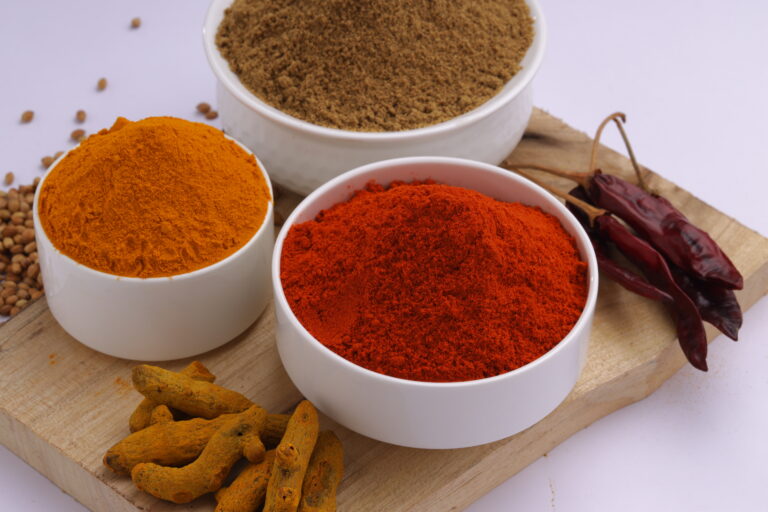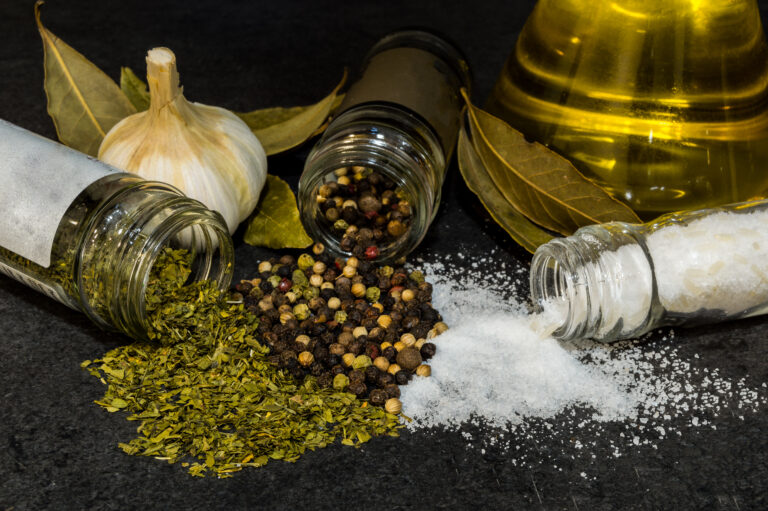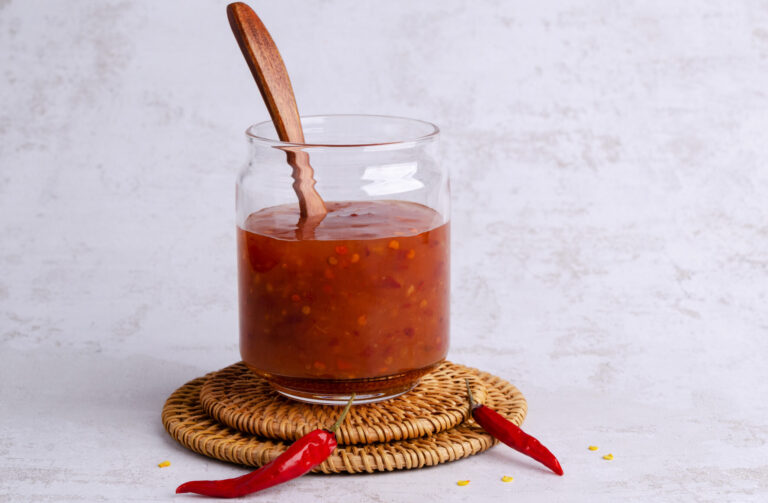5 Homemade Natural Condiments to Make Your Meals Healthier
Crafting homemade natural condiments is easy and healthy. Explore essential ingredients, mixing techniques, and storage tips for fresh, flavorful results.

Elevate your meals with homemade natural condiments that are both delicious and free of artificial additives. Discover easy recipes to transform your pantry staples into flavorful accompaniments.
Disclosure: As an Amazon Associate, this site earns from qualifying purchases. Thank you!
Exploring the Basics of Condiment Making

Essential Ingredients for Natural Condiments
- Vinegar: Brings acidity and brightness to condiments like ketchup and mustard.
- Oil: Olive oil or avocado oil is ideal for vinaigrettes and mayo.
- Herbs and Spices: Basil, oregano, cumin, and paprika provide depth and complexity.
- Sweeteners: Use honey, maple syrup, or agave for balance and sweetness.
- Salt: Sea salt or kosher salt enhances and brings out flavors.
- Fresh Produce: Garlic, onions, and tomatoes are must-haves for salsas and relishes.
Essential Tools
- Blender or Food Processor: Essential for smooth sauces and dressings.
- Mason Jars: Perfect for storing your homemade condiments.
- Mixing Bowls: Necessary for combining ingredients evenly.
- Whisk and Wooden Spoons: For emulsifying and stirring mixtures.
- Fine Mesh Sieve: Helps in straining and achieving a smooth texture.
- Measuring Spoons and Cups: Ensure precise ingredient quantities for consistent results.
Step-by-Step Guide to Homemade Mustard
Mastering homemade mustard is a game-changer. Follow these steps to create a condiment that’s fresher and more flavorful than store-bought versions.
Choosing Your Mustard Seeds
- Pick the right seeds: Use yellow for a milder flavor or brown for a spicier kick. Combine both for balanced heat and tang.
- Proportions: Opt for a 1:1 ratio to start. Adjust according to taste.
Mixing and Seasoning Techniques
- Grind seeds: Use a spice grinder or mortar and pestle. Aim for a coarse texture.
- Mix ingredients: Combine 1/2 cup ground seeds with 1/2 cup water, 1/4 cup vinegar, and a pinch of salt.
- Customize flavors: Add honey or maple syrup for sweetness, turmeric for color, or minced garlic for depth. Experiment with herbs like dill or tarragon.
- Let it sit: Allow the mixture to rest for at least 24 hours to develop flavors. Store in an airtight jar in the fridge.
Crafting the Perfect Homemade Ketchup
Selecting the Right Tomatoes
Choose ripe, vine-ripened tomatoes. These have the best balance of sweetness and acidity. Go for plum tomatoes if you want thicker ketchup due to their lower water content.
Adding Natural Sweeteners and Spices
Use honey or maple syrup to add natural sweetness. Stick to your taste preference for the amount, but start with 1/4 cup per pound of tomatoes. Season with spices like garlic powder, onion powder, and ground allspice. Adjust until you find your perfect blend.
Creating Flavorful Homemade Mayonnaise

When moving onto another classic condiment, mayonnaise, you’ll discover that making it at home allows you to control both flavor and texture.
Ingredients
- Egg Yolks: Use 2 large egg yolks at room temperature.
- Oil: Opt for 1 cup of neutral oils like canola or avocado oil.
- Acid: Add 1 tablespoon of vinegar or lemon juice.
- Mustard: Include 1 teaspoon of Dijon mustard for flavor.
- Seasoning: A pinch of salt to taste.
Instructions
- Start: Begin by whisking the egg yolks, mustard, and acid in a bowl.
- Slowly Add Oil: Gradually drizzle in the oil while constantly whisking to create an emulsion.
- Consistency Check: Continue until the mixture thickens and resembles traditional mayonnaise.
- Adjust Flavor: Season with salt as needed and add more lemon juice or vinegar for tanginess.
You’ve made your own rich and creamy mayonnaise, perfect for sandwiches, salads, and more.
Innovative Homemade BBQ Sauce Recipes

Choosing a Base: Tomato, Vinegar, or Mustard?
Optimize the heart of your BBQ sauce by selecting the right base. Tomatoes give a classic thick and sweet profile. Use canned or fresh tomatoes, blending until smooth. Vinegar bases, especially apple cider or white vinegar, add tang and cut through richness, ideal for Carolina-style sauces. Mustard bases bring a sharp, piquant essence, perfect for pairing with pork.
Sweeteners and Spices to Enhance Flavor
Elevate your BBQ sauce with the right sweeteners and spices. Use natural options like honey, maple syrup, or brown sugar for depth and molasses undertones. To add complexity, integrate spices such as smoked paprika, garlic powder, onion powder, and cayenne. Fresh herbs like thyme and rosemary add layers of flavor. Don’t forget a dash of Worcestershire sauce for umami richness.
Health Benefits of Homemade Natural Condiments

Avoiding Artificial Additives and Preservatives
Avoid synthetic chemicals. Homemade condiments let you skip artificial additives and preservatives commonly found in store-bought options. Create fresher, cleaner flavors. You’ll know exactly what’s in each recipe, promoting a healthier lifestyle.
Controlling Salt and Sugar Levels
Control your intake. By making condiments at home, you can adjust the salt and sugar levels exactly as you like. Reduce added sugars. Avoid excessive sodium. Tailor each condiment to your dietary needs and preferences without compromising taste.
Storing and Preserving Your Homemade Condiments

Proper storage ensures you enjoy your homemade condiments for longer periods.
Best Practices for Long-Term Storage
- Use Airtight Containers: Store condiments in glass jars or bottles with tight-fitting lids. This prevents air and moisture from entering.
- Label With Dates: Write the preparation date on the container. This helps you keep track of freshness.
- Refrigerate When Necessary: Most homemade condiments should be refrigerated to preserve flavor and prevent spoilage.
- Avoid Metal Containers: Use non-reactive containers like glass or ceramic. Metals can react with acidic ingredients.
- Freeze for Extended Storage: For condiments that freeze well, freeze in small portions. Use freezer-safe containers and label them.
- Minimize Exposure to Light and Heat: Store condiments in a cool, dark place. Light and heat can degrade flavors.
- Use Clean Utensils: Always use clean spoons or measuring tools when scooping condiments to avoid contamination.
- Monitor Consistency: Check regularly for changes in texture or smell. Discard if you notice any off-putting signs.
- Seal Tightly After Each Use: Ensure lids are securely fastened after every use to maintain freshness.
- Consider Homemade Vinegar-Based Preservatives: Add a bit more vinegar or citrus to some recipes for better preservation. Vinegar acts as a natural preservative.
Frequently Asked Questions
What are the benefits of making homemade natural condiments?
Making homemade natural condiments allows you to avoid artificial additives and preservatives, leading to healthier and fresher options. You can control the quality and quantity of ingredients, ensuring better nutritional content.
What essential ingredients are needed for homemade mustard?
For homemade mustard, you’ll need mustard seeds or powder, vinegar, salt, and water. You can also add honey, garlic, or herbs for additional flavor.
How should I store homemade condiments to maintain freshness?
Store homemade condiments in airtight containers in the refrigerator. Label each container with the date of preparation to keep track of freshness.
Can I freeze homemade condiments for longer storage?
Yes, you can freeze homemade condiments for extended storage. Use freezer-safe containers and leave some space for expansion. Thaw in the refrigerator before use.
Why should I avoid using metal containers for storing condiments?
Avoid metal containers because they can react with acidic condiments, altering the flavor and potentially introducing harmful substances.
How can I ensure my condiments stay flavorful over time?
Minimize exposure to light and heat, use clean utensils to prevent contamination, and seal containers tightly after each use to maintain flavor and freshness.
Are vinegar-based preservatives effective for homemade condiments?
Yes, vinegar-based preservatives are effective in prolonging the shelf life of homemade condiments by inhibiting the growth of bacteria and mold.
How often should I check the consistency and quality of homemade condiments?
Regularly check your homemade condiments for changes in texture, color, or smell. These can be indicators that the condiment has spoiled and should be discarded.
Can I customize my homemade condiment recipes?
Absolutely! Feel free to adjust ingredients and flavors to suit your taste preferences. Homemade condiments are highly customizable.
What should I do if my homemade ketchup becomes too thick?
If your homemade ketchup is too thick, you can thin it out by adding a small amount of water or vinegar until you reach your desired consistency.






